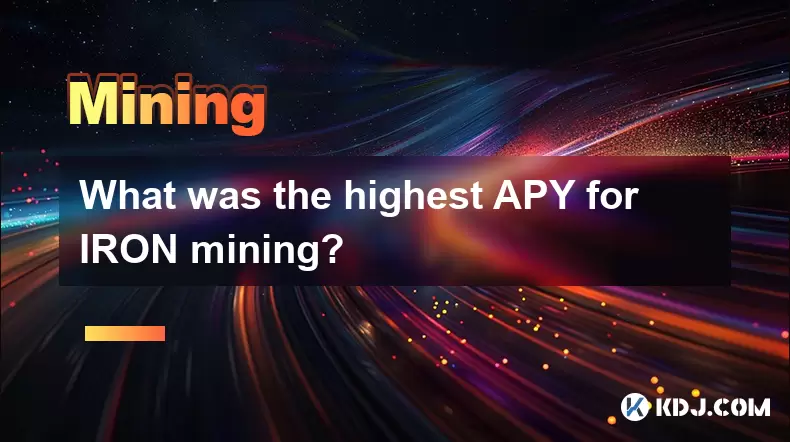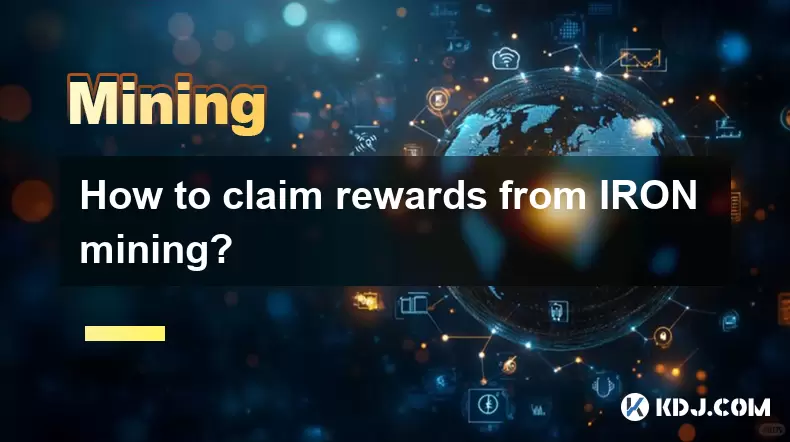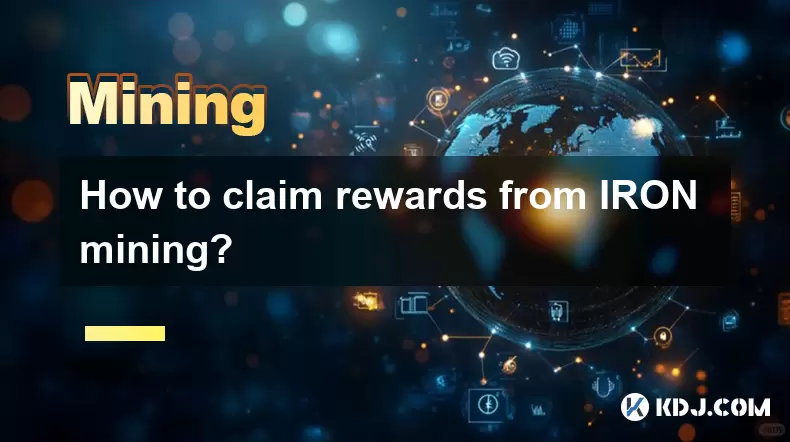-
 Bitcoin
Bitcoin $114400
0.68% -
 Ethereum
Ethereum $3550
2.48% -
 XRP
XRP $3.001
4.99% -
 Tether USDt
Tether USDt $0.9999
0.01% -
 BNB
BNB $757.6
1.46% -
 Solana
Solana $162.9
1.07% -
 USDC
USDC $0.9998
0.00% -
 TRON
TRON $0.3294
0.91% -
 Dogecoin
Dogecoin $0.2015
2.46% -
 Cardano
Cardano $0.7379
2.01% -
 Stellar
Stellar $0.4141
8.83% -
 Hyperliquid
Hyperliquid $37.83
-1.91% -
 Sui
Sui $3.454
0.76% -
 Chainlink
Chainlink $16.62
3.53% -
 Bitcoin Cash
Bitcoin Cash $554.6
2.84% -
 Hedera
Hedera $0.2486
3.91% -
 Ethena USDe
Ethena USDe $1.001
0.00% -
 Avalanche
Avalanche $21.95
3.34% -
 Toncoin
Toncoin $3.563
-2.85% -
 Litecoin
Litecoin $112.7
2.65% -
 UNUS SED LEO
UNUS SED LEO $8.977
0.13% -
 Shiba Inu
Shiba Inu $0.00001232
1.85% -
 Uniswap
Uniswap $9.319
2.93% -
 Polkadot
Polkadot $3.632
1.38% -
 Monero
Monero $307.2
2.36% -
 Dai
Dai $0.9997
-0.03% -
 Bitget Token
Bitget Token $4.340
0.91% -
 Pepe
Pepe $0.00001048
1.07% -
 Cronos
Cronos $0.1348
3.26% -
 Aave
Aave $261.5
1.93%
What is the Bitcoin mining algorithm?
Bitcoin mining uses SHA-256 to verify transactions and add them to the blockchain, with difficulty adjusting every 2016 blocks to maintain a 10-minute block time.
Apr 15, 2025 at 08:00 pm

What is the Bitcoin Mining Algorithm?
Bitcoin mining is a crucial process that maintains the integrity and security of the Bitcoin network. At the heart of this process lies the Bitcoin mining algorithm, which is responsible for verifying transactions and adding them to the blockchain. Understanding this algorithm is essential for anyone interested in the technical underpinnings of Bitcoin. This article delves into the specifics of the Bitcoin mining algorithm, explaining its components, how it works, and its importance to the Bitcoin ecosystem.
h3>The Basics of the Bitcoin Mining Algorithm
The Bitcoin mining algorithm is primarily based on the SHA-256 (Secure Hash Algorithm 256-bit) hashing function. This cryptographic hash function takes an input, processes it through a series of mathematical operations, and produces a fixed-size 256-bit output. The primary goal of the Bitcoin mining algorithm is to find a hash that meets certain criteria, known as the target hash. This target hash is adjusted every 2016 blocks, or approximately every two weeks, to maintain a consistent block time of about 10 minutes.
h3>How the Bitcoin Mining Algorithm Works
Miners compete to solve complex mathematical problems using the SHA-256 algorithm. Each miner takes a block of transactions and combines it with a nonce (number used once) and the previous block's hash. They then hash this combined data. If the resulting hash is lower than the target hash, the miner has successfully mined a block and is rewarded with newly minted bitcoins and transaction fees.
- Combine the block header data: This includes the version, the hash of the previous block, the Merkle root (a hash of all transactions in the block), the timestamp, the target difficulty, and the nonce.
- Apply the SHA-256 function twice: The data is first hashed once, and then the result is hashed again. This double hashing adds an extra layer of security.
- Compare the resulting hash to the target hash: If the hash is lower than the target, the miner has found a valid block.
h3>The Role of Difficulty in the Bitcoin Mining Algorithm
The difficulty of the Bitcoin mining algorithm is a critical component that ensures the network's security and maintains the block time. The difficulty adjusts automatically to ensure that the average time to mine a block remains around 10 minutes, regardless of the total computational power of the network. When more miners join the network and the total hash rate increases, the difficulty increases to make mining more challenging. Conversely, if miners leave and the hash rate decreases, the difficulty is reduced.
The difficulty is calculated using the formula:
[ \text{Difficulty} = \frac{\text{Difficulty_1_Target}}{\text{Current_Target}} ]
Where Difficulty_1_Target is a constant value defined in the Bitcoin protocol, and Current_Target is the current target hash.
h3>The Importance of the Bitcoin Mining Algorithm
The Bitcoin mining algorithm plays several vital roles in the Bitcoin network:
- Security: By requiring miners to solve complex mathematical problems, the algorithm ensures that altering the blockchain is computationally infeasible. This protects the integrity of the transaction history.
- Decentralization: The algorithm allows anyone with the necessary hardware to participate in mining, promoting a decentralized network where no single entity can control the majority of the mining power.
- Incentivization: Miners are rewarded for their efforts, which incentivizes them to continue securing the network. This reward system is crucial for the continued operation and growth of the Bitcoin network.
h3>Technical Details of the SHA-256 Algorithm
The SHA-256 algorithm is a member of the SHA-2 family of cryptographic hash functions designed by the National Security Agency (NSA). It is widely used in various security applications, including digital signatures and checksums. The algorithm processes input data in 512-bit blocks and produces a 256-bit output.
The SHA-256 algorithm operates through several steps:
- Padding: The input message is padded to ensure its length is a multiple of 512 bits.
- Parsing: The padded message is divided into 512-bit blocks.
- Hash Computation: Each block is processed through a series of logical functions and bitwise operations, including AND, OR, XOR, and rotations. The initial hash value is updated after processing each block.
- Output: The final hash value is the 256-bit output of the algorithm.
h3>Challenges and Considerations in Bitcoin Mining
Bitcoin mining is not without its challenges. The increasing difficulty of the mining algorithm means that miners need more powerful and energy-efficient hardware to remain competitive. This has led to the development of specialized hardware known as ASICs (Application-Specific Integrated Circuits), which are designed specifically for Bitcoin mining.
Additionally, the energy consumption associated with Bitcoin mining has raised environmental concerns. Miners must balance the cost of electricity with the potential rewards from mining, which can be a significant operational challenge.
h3>Frequently Asked Questions
Q: Can I mine Bitcoin on a regular computer?
A: While it is technically possible to mine Bitcoin on a regular computer, it is not practical due to the high difficulty of the mining algorithm. Regular computers lack the processing power needed to compete with ASICs, making it unlikely to mine a block and earn rewards.
Q: How does the Bitcoin mining algorithm ensure the security of the network?
A: The Bitcoin mining algorithm ensures security by requiring miners to solve complex mathematical problems. This process, known as proof-of-work, makes it computationally expensive to alter the blockchain, thereby protecting the integrity of the transaction history.
Q: What happens if two miners find a valid block at the same time?
A: In the event of a tie, the Bitcoin network will temporarily accept both blocks, creating a temporary fork. Miners will then continue to build on the block they received first. Eventually, one chain will become longer than the other, and the network will converge on the longest chain, discarding the shorter one.
Q: How often does the difficulty of the Bitcoin mining algorithm change?
A: The difficulty of the Bitcoin mining algorithm is adjusted every 2016 blocks, which occurs approximately every two weeks. This adjustment ensures that the average time to mine a block remains around 10 minutes.
Disclaimer:info@kdj.com
The information provided is not trading advice. kdj.com does not assume any responsibility for any investments made based on the information provided in this article. Cryptocurrencies are highly volatile and it is highly recommended that you invest with caution after thorough research!
If you believe that the content used on this website infringes your copyright, please contact us immediately (info@kdj.com) and we will delete it promptly.
- Cryptocurrency, Altcoins, and Profit Potential: Navigating the Wild West
- 2025-08-04 14:50:11
- Blue Gold & Crypto: Investing Disruption in Precious Metals
- 2025-08-04 14:30:11
- Japan, Metaplanet, and Bitcoin Acquisition: A New Era of Corporate Treasury?
- 2025-08-04 14:30:11
- Coinbase's Buy Rating & Bitcoin's Bold Future: A Canaccord Genuity Perspective
- 2025-08-04 14:50:11
- Coinbase's Buy Rating Maintained by Rosenblatt Securities: A Deep Dive
- 2025-08-04 14:55:11
- Cryptos, Strategic Choices, High Returns: Navigating the Meme Coin Mania
- 2025-08-04 14:55:11
Related knowledge

What was the highest APY for IRON mining?
Jul 23,2025 at 05:14am
Understanding IRON Token and Its Mining MechanismThe IRON token is a stablecoin that operates within the Iron Finance ecosystem, primarily on blockcha...

What is impermanent loss in IRON pools?
Jul 23,2025 at 09:00am
Understanding Impermanent Loss in the Context of IRON PoolsImpermanent loss is a phenomenon that affects liquidity providers in decentralized finance ...

How to claim rewards from IRON mining?
Jul 23,2025 at 02:21pm
Understanding IRON Mining and Reward MechanismsIRON Finance operated as a decentralized finance (DeFi) protocol on the Polygon and Binance Smart Chain...

How to claim rewards from IRON mining?
Jul 29,2025 at 05:07am
Understanding IRON Mining and Reward MechanismIRON is a dual-token system designed to stabilize the value of a synthetic asset through a combination o...

IRON mining tutorial for beginners
Jul 27,2025 at 12:01am
What Is IRON and How Does It Work in the Cryptocurrency Ecosystem?IRON is a cryptocurrency token that operates on the Binance Smart Chain (BSC) and is...

How to calculate APY for IRON mining?
Jul 28,2025 at 09:49am
Understanding APY in the Context of IRON Token MiningWhen engaging in IRON token mining within decentralized finance (DeFi) platforms, Annual Percenta...

What was the highest APY for IRON mining?
Jul 23,2025 at 05:14am
Understanding IRON Token and Its Mining MechanismThe IRON token is a stablecoin that operates within the Iron Finance ecosystem, primarily on blockcha...

What is impermanent loss in IRON pools?
Jul 23,2025 at 09:00am
Understanding Impermanent Loss in the Context of IRON PoolsImpermanent loss is a phenomenon that affects liquidity providers in decentralized finance ...

How to claim rewards from IRON mining?
Jul 23,2025 at 02:21pm
Understanding IRON Mining and Reward MechanismsIRON Finance operated as a decentralized finance (DeFi) protocol on the Polygon and Binance Smart Chain...

How to claim rewards from IRON mining?
Jul 29,2025 at 05:07am
Understanding IRON Mining and Reward MechanismIRON is a dual-token system designed to stabilize the value of a synthetic asset through a combination o...

IRON mining tutorial for beginners
Jul 27,2025 at 12:01am
What Is IRON and How Does It Work in the Cryptocurrency Ecosystem?IRON is a cryptocurrency token that operates on the Binance Smart Chain (BSC) and is...

How to calculate APY for IRON mining?
Jul 28,2025 at 09:49am
Understanding APY in the Context of IRON Token MiningWhen engaging in IRON token mining within decentralized finance (DeFi) platforms, Annual Percenta...
See all articles

























































































